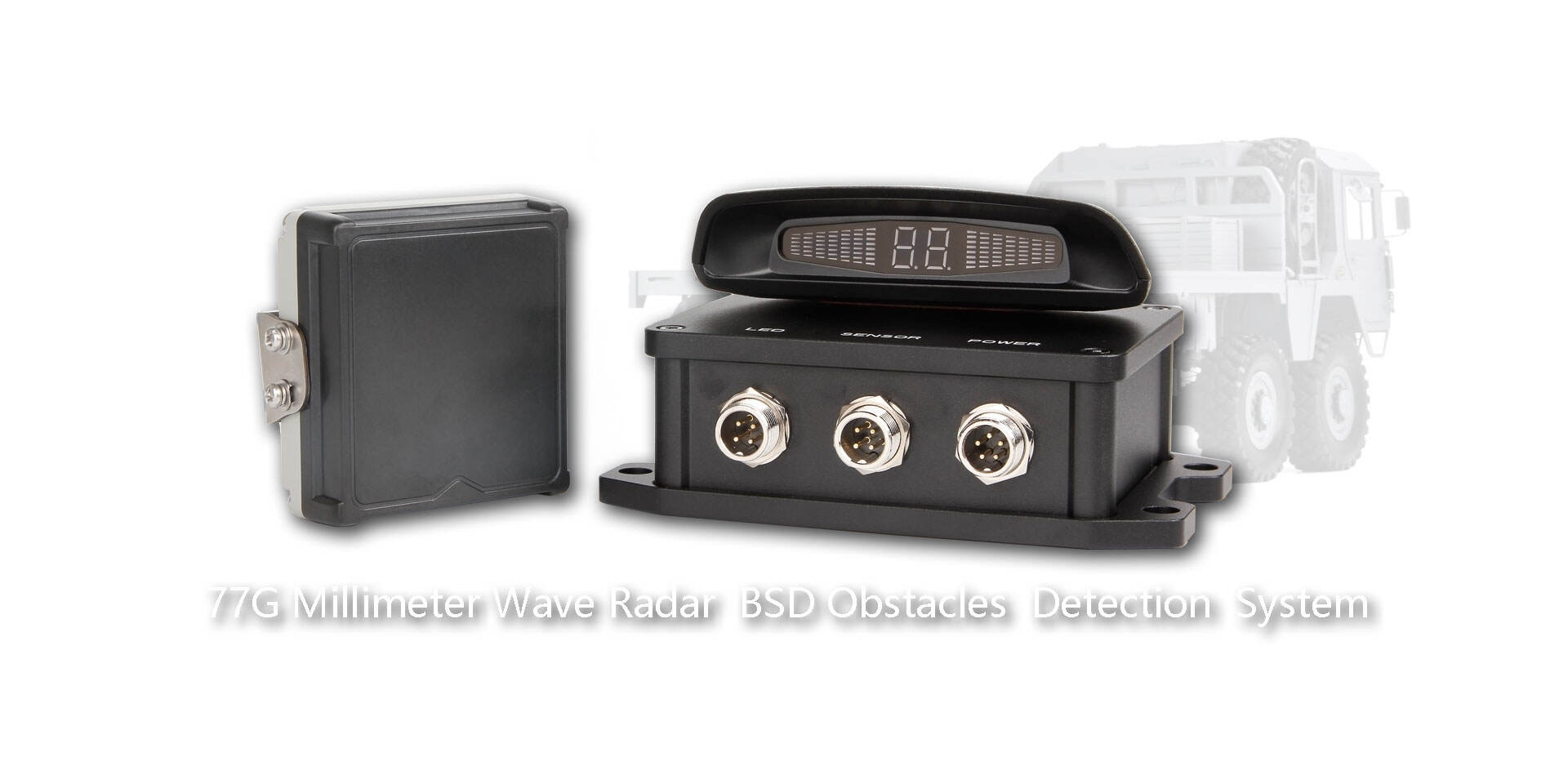77GHz millimeter wave radar applications in reverse and blind spot monitoring (BSD) alarms
77GHz millimeter wave radar has important applications in reverse and blind spot monitoring (BSD) alarms.
First, the application of reversing
Accurate ranging:
The 77GHz millimeter-wave radar accurately measures the distance between the rear of the vehicle and obstacles. In the process of reversing, the distance information between the vehicle and the rear object is provided to the driver in real time to help the driver better judge the safe distance of reversing.
Compared with traditional ultrasonic sensors, millimeter wave radar has a longer range and higher accuracy, and can detect long-distance obstacles, providing more adequate reaction time for drivers.
Multi-target detection:
Multiple targets can be detected simultaneously, including other vehicles, pedestrians, columns and other different types of obstacles. This is important for complex reversing environments, such as in parking lots, where multiple vehicles and other objects may be present at the same time.
Millimeter wave radar can distinguish the position and motion state of different targets, provide drivers with more detailed astern environment information, and avoid collision accidents.
Adapt to different environments:
Not affected by light, weather and other factors. Whether it is in the day, night, rainy day, fog and other environmental conditions, millimeter wave radar can work normally, providing reliable security for reversing.
Compared to camera-based reverse assistance systems, MMwave radar is more stable in bad weather conditions and does not affect detection results due to poor light or blurred vision.
Integration and display:
The 77GHz mmwave radar can be integrated with the vehicle's center control display, reverse image system, etc. When reversing, the information detected by the radar is visually displayed to the driver, for example, the obstacle distribution behind the vehicle is displayed through the graphical interface, the distance indication, etc.
Some high-end models will also combine millimeter-wave radar with automatic parking systems to achieve more intelligent reversing assistance functions, such as automatically finding parking Spaces and automatically reversing into the garage.
Second, the application of blind spot monitoring (BSD) alarm
Blind spot detection:
During the driving of the vehicle, there are some blind areas that the driver cannot directly observe, such as the rear area on both sides of the vehicle. The 77GHz millimeter wave radar can be mounted on the side or rear bumper of the vehicle to monitor these blind spots in real time.
When other vehicles enter the blind zone, millimeter wave radar can quickly detect and alert the driver, reminding the driver to pay attention to the potential danger in the blind zone.
Lane change assistance:
When a vehicle changes lanes, the BSD system can detect vehicles in adjacent lanes through millimeter-wave radar. If a vehicle is detected near the adjacent lane, and the distance is too close to the risk of collision, the system will issue an alarm to remind the driver to change lanes cautiously.
This lane change assistance function can greatly improve the safety of vehicle driving and reduce the side impact accidents caused by driver negligence.
High reliability:
Millimeter wave radar has high reliability and stability. It is not affected by vehicle vibration, electromagnetic interference and other factors, and can work continuously and stably to provide reliable detection data for BSD system.
Millimeter wave radar has a lower false alarm rate compared to other sensors, enabling it to accurately identify real dangerous situations and avoid unnecessary alerts that disturb the driver.
Intelligent integration:
The 77GHz mmwave radar can be integrated with other sensors (such as cameras, ultrasonic sensors, etc.) for more accurate and comprehensive blind spot monitoring. Different sensors can complement each other to improve the detection performance and reliability of the system.
For example, cameras can provide more intuitive image information, while millimeter-wave radar can provide more reliable detection results in adverse weather conditions. Through intelligent integration, more perfect safety protection can be provided for drivers.

 EN
EN
 AR
AR
 HR
HR
 CS
CS
 DA
DA
 NL
NL
 FI
FI
 FR
FR
 DE
DE
 EL
EL
 IT
IT
 JA
JA
 KO
KO
 NO
NO
 PL
PL
 PT
PT
 RO
RO
 RU
RU
 ES
ES
 SV
SV
 IW
IW
 ID
ID
 LV
LV
 LT
LT
 SR
SR
 SK
SK
 SL
SL
 UK
UK
 SQ
SQ
 ET
ET
 HU
HU
 TH
TH
 TR
TR
 FA
FA
 AF
AF
 MK
MK
 KA
KA
 UR
UR
 BN
BN


